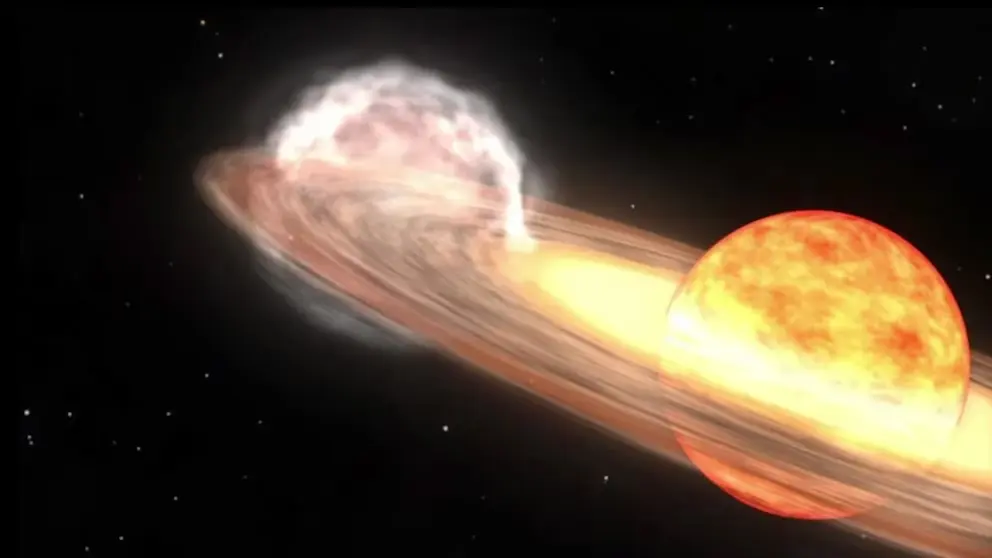The astronomical community eagerly awaits the potential explosion of T Coronae Borealis (T CrB), commonly known as the “Blaze Star,” a recurrent nova located approximately 3,000 light-years away in the constellation Corona Borealis. If predictions hold, this rare event will mark the first such occurrence since 1946, offering sky-watchers a unique opportunity to witness a once-in-a-lifetime stellar phenomenon.
Understanding the Blaze Star: A Recurrent Nova
T CrB is a binary star system consisting of a white dwarf and a red giant. The white dwarf, a dense remnant of a sunlike star, continuously accumulates material from its red giant companion. When the accreted material reaches a critical threshold, a thermonuclear explosion ensues, dramatically increasing the star’s brightness. This process, known as a recurrent nova, occurs approximately every 80 years for T CrB, with previous recorded eruptions in 1786, 1866, and 1946.
Predicting the Next Eruption
Astronomers originally estimated that the next eruption would occur between April and September 2024, based on historical patterns and observed pre-nova fluctuations in brightness. However, as 2024 passed without an explosion, revised calculations incorporating the binary system’s 228-day orbital cycle suggest that the nova may erupt as early as March 27, 2025, or potentially on subsequent dates, including November 10, 2025, June 25, 2026, or February 8, 2027.
How and When to Observe T Coronae Borealis
For observers in the Northern Hemisphere, T CrB will become increasingly visible in early 2025. By March, Corona Borealis will rise in the eastern sky approximately three hours after sunset, becoming easily visible around four hours post-sunset. Over the following months, it will rise progressively earlier, making it a more convenient nighttime target.
To locate T CrB, first identify the bright stars Vega (rising in the northeast) and Arcturus (rising in the east). Corona Borealis, the “Northern Crown,” is situated between them as a distinct arc of stars. An alternative method involves following the handle of the Big Dipper/Plough to Arcturus, then tracing a line toward Vega to locate the crescent-shaped Corona Borealis.
Expected Brightness and Visual Impact
When T CrB erupts, its apparent magnitude is expected to reach +2, making it as bright as Polaris, the North Star. While this will not “light up the night sky” in a dramatic fashion, it will temporarily add a “guest star” to the familiar constellation, altering its characteristic shape for several days. This relatively short-lived event necessitates advance preparation for those wishing to observe it.
A Once-in-a-Lifetime Celestial Event
The upcoming nova of T Coronae Borealis presents an extraordinary opportunity to witness a rare astrophysical event with forewarning—something seldom afforded in observational astronomy. By identifying its location in the night sky in advance, observers can maximize their chances of witnessing this fleeting yet remarkable phenomenon. Whether in March 2025 or a later projected date, when the Blaze Star finally erupts, it will serve as a striking reminder of the dynamic and ever-changing nature of our universe.


